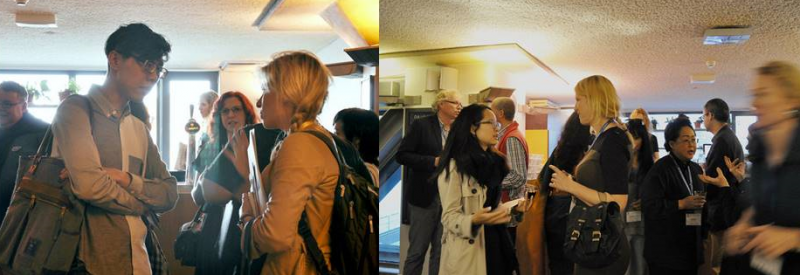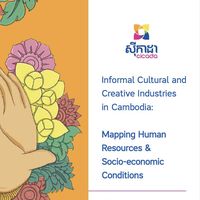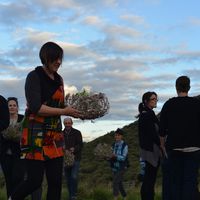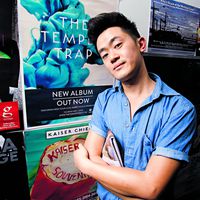The rise of the portfolio career in the creative industries
 ASEF culture360 contributor Claire Rosslyn Wilson will explore freelancing in the creative industries by interviewing various practitioners in Asia and Europe. In this first article she will start off the series with an overview of the freelancing environment, paying particular attention to the rise of portfolio careers. In later articles she will look at key challenges individual creative freelancers face.
ASEF culture360 contributor Claire Rosslyn Wilson will explore freelancing in the creative industries by interviewing various practitioners in Asia and Europe. In this first article she will start off the series with an overview of the freelancing environment, paying particular attention to the rise of portfolio careers. In later articles she will look at key challenges individual creative freelancers face.
The attitude to work is changing in the 21st century. Researcher Richard Florida describes a new economic creative class, which he believes will dominate economic and cultural life, in similar ways to the working class of the early 20th and service industry in the late 20th century.
…we work more independently and find it much harder to cope with incompetent managers and bullying bosses. We trade job security for autonomy. In addition to being fairly compensated for the work we do and the skills we bring, we want the ability to learn and grow, shape the content of our work, control our own schedules and express our identities through work. (Florida, 2002: 13.)
Workers no longer stay with the one company their whole life and it is normal to shift industries more than once. People are demanding more flexibility in their work, learning diverse skills throughout their career so that they discover the job that best suits their capabilities and lifestyle.
This development of a more flexible career path is what Hartley calls an individual portfolio career (Hartley, 2005). A portfolio career is when people do a combination of part time jobs, including temporary or casual jobs, contracts, short-term projects or freelancing. All of this adds up to full time work with a number of employers. This type of work suits people who have multiple interests, who are good at multitasking and who are organised and self-motivated. However, this way of working is also an option for people who can’t find full time work in a difficult economic environment.
The trend of more flexible work conditions is supported by a PwC report that interviewed 10,000 workers in China, India, Germany, the UK and the USA, which found that one-fifth of employees see themselves working virtually, with the ability to log on from any location within the next 10 years. From the employer’s perspective, one-third will soon be hiring staff on a more ad-hoc basis, encouraging the growth in portfolio careers as a result.
How people work in the creative industries
How does this increasing flexibility operate in the creative industries? In 2013 the Queensland University of Technology Centre of Excellence for Creative Industries and Innovation (QUT CCI) developed a framework for understanding the nature of the creative workforce. (Creative Industries Innovation Centre, 2013) The report describes three different types of workers in the creative industries.
- Specialist creatives: those who are creatively occupied and work within the creative industries.
- Support workers: those who are not creatively occupied but do work within the creative industries.
- Embedded creatives: those who are creatively occupied but work outside the creative industries, such as manufacturing, wholesale trade and scientific and technical services which are the three industries who employ the highest number of embedded creatives.
This framework focuses on understanding the interchange between all creative effort, not just the final outputs of artists. Take for example a playwright/director. They might have some work as a specialist creative where they write and direct a play to put on in a traditional theatre. But they might also work as a support worker by running a fringe theatre festival. In this role they might be selecting plays, booking accommodation and venues and making sure that the shows are well attended. This is not creative work, but it is still engaging in dialogue in the creative industries. From this position they might make links that can transfer over to their creative practice as a playwright/director. To supplement their income they might also find work as an embedded creative by writing training video scripts for a bank. All this work is creative or is involved in the creative industries, but each of the roles is very different and requires a distinct set of skills.
This framework of how creative practitioners work highlights that it is not solely specialist creative artists who are contributing to a wealth economy based on innovation and creativity. In fact, embedded creatives, those working creatively in other industries, make up the biggest percentage of creative workers (at 43%, Creative Industries Innovation Centre, 2013). A creative freelancer will move fluidly between the three areas of specialist, support and embedded creatives, and they will need interdisciplinary and transferable skills to do so.
Managing an income as a creative freelancer
Part of the advantage of developing a portfolio career is that it helps to manage unreliable or low incomes, a reality that artists often face. In the Australian context, academics Throsby and Zednik estimated that in 2007-08 the median total income of an artist (using all forms of work) was around AUD$35,900. For artists who worked full time on their creative arts practice (less than 20%), the average yearly income was around AUD$22,500 (Throsby and Zednik, 2010). As a comparison the median income for professionals was AUD$61,700.
This is a trend that can be seen in other countries.
- In the UK nearly three-quarters of artists earn 37% of the average UK salary from their practice (£10,000 a year)
- In Finland in 2010 the proportion of income from artistic work was on average 52%. Other taxable income was generated from arts-related work, non-arts work, and other sources, such as pensions and unemployment benefits.
- In Sweden 64% of artists had a monthly income of 13 300 SEK or less (the national average monthly wage is 30,950 SEK according to OECD)
- In South Korea, artists earn 77% of the average wage
In order to manage this unreliable income, artists often balance different forms of work. The average Australian professional artist spent 53% of their time on their creative work, 28% on arts related work and 20% on non-arts work (Throsby and Zednik, 2010). The average hours worked per week for an artist were about 41 hours. Breaking these down into a weekly schedule, this meant they spent 22 hours a week on their main creative practice, four hours on creative work not related to their practice, seven hours in another paid arts-related occupation and eight hours on non-arts related paid work. Generally two thirds of those surveyed would prefer to spend more time on creating artwork.
Is a portfolio career the solution?
Unless they are the next Anish Kapoor, earning a low income for their work is a reality for many artists. In order to develop a sustainable creative freelance practice, working in diverse projects across the three areas of specialist, support and embedded creative work is a viable solution.
In an article in ArtsHub creative freelancers talked about their portfolio careers and they explained that building multiple skills was vital for their success. Continuing to learn new skills was a key, which they did through formal education, mentorships or free courses. Each of the freelancers interviewed found that through this process they were able to have a better understanding of their skills and discover what work made them most happy. Instead of being confined by a conventional position description, they were able to revisit their childhood dreams where it seemed possible to be both a musician as well as a filmmaker. As manager/teacher/volunteer Christian Stena states:
It’s really about us being able to bring to life all the different components that make us up and make us who we are, rather than investing everything into one particular basket. (Christian Stena, ArtsHub)
Thinking outside the box when working out their career path might even help artists to keep working in the area they love and still make a living.
But a portfolio career isn’t for everyone. It is necessary to build a diverse set of skills and wear different hats, creating job titles such as writer/editor/teacher/arts administrator. Developing a diverse range of skills means that creative freelancers can move between their specialist practice, to jobs as support workers or embedded creatives when they need to supplement their income. But it also means they need to spend time developing these diverse skills that might not seem directly related to their creative practice and therefore a waste of time. Whether this is seen as an opportunity or a detrimental constraint depends on the attitude of the individual artist, as well as an understanding of the way they work best. No two ways of working will be the same, but given the trends of flexible working conditions as well as the economic realities of artists, the portfolio career might become the norm for creative freelancers in the near future.
References:
Creative Industries Innovation Centre. 2013. Valuing Australia’s Creativity, Queensland, Queensland University of Technology Centre of Excellence for Creative Industries and Innovation.
Department for Culture, Media and Sport. 1998. Creative Industries Mapping Document, London, Department for Culture, Media and Sport
Florida R. 2002. Rise of the Creative Class, Yew York, Basic Books.
Portfolio Career: Is the Latest Work Trend Right for You? In Forbes, http://www.forbes.com/sites/learnvest/2013/02/27/portfolio-careers-is-the-latest-work-trend-right-for-you/ (last accessed 5/3/2015)
Hartley, John ed. 2005 Creative Industries, Oxford, Blackwell Publishing.
Throsby, D. and Zednik A. 2010. Do you really expect to get paid? An economic study of professional artists in Australia, Strawberry Hills, Australia Council for the Arts.
United Nations Conference of Trade and Development (UNCTAD). 2010. Creative Economy Report: A Feasible Development Option, New York, United Nations Conference of Trade and Development (UNCTAD).
Claire Rosslyn Wilson is a poet and non-fiction writer who has worked in the Asia-Pacific. She has had her poems published in Australian journals such as Voiceworks, Visible Ink and Verge. In 2014 she undertook a fellowship at the Wheeler Centre to develop a book of poems. Claire has also written articles for Tongues Multilingual Magazine, Art Radar Asia, the Flying Inkpot Theatre and Dance and culture360.org. She obtained a Master of Arts Management from RMIT University. You can follow her exploits on Twitter @clairerosslyn
Similar content
from - to
23 Jul 2011 - 24 Jul 2011
04 Sep 2018
deadline
09 Nov 2021






